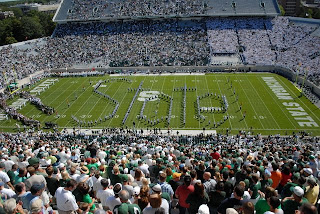As a writer, communicating effectively is something I believe to be of the utmost importance—which is why I decided to challenge myself this semester by taking an information graphics course. Communicating visually, using things like charts and illustrations, is just as significant as conveying a message using words. Oftentimes it is more successful. I wanted to be able to strengthen my ability to communicate by using visuals to complement the words that I wrote. I didn’t realize that a whole field of study and work was dedicated to the effort of graphically displaying information until I walked into the classroom of Karl Gude, former director of information graphics at Newsweek. I learned that not only do graphics complement written explanations, sometimes it’s the other way around—and, in certain situations, illustrations can eliminate the need for words altogether.
In order to get honors credit in Karl’s class, I decided to learn a little about the subject area as a whole. The field of information graphics has been defined in large part by Edward Tufte’s opinions and expertise, as conveyed in his lectures and books (e.g. Visual Explanations). However, Tufte’s books are quickly becoming classics (read: antiquated) as the way we communicate expands to encompass our utilization of and access to new forms of technology. To try and understand how information graphics is evolving, I talked to Ben Fry, a designer who is at the forefront of the field, pushing the boundaries of how we communicate. On top of his fascinating insights, Fry’s responses were interesting for me as a student trying to figure out what to do for a career. His passion for his work is evident, and the way he has been able to combine all of his interests into a satisfying, flourishing career is something for me to aspire to.

Q: In your book Visualizing Data you discuss the problem of what you refer to as “the separation of fields?” What made you first think about combining different fields of study and different approaches? Why is it important to do so?
A: I think the importance comes from the fact that there are too many unsolved problems in how we understand data. We're pretty good at understanding static things of a certain size or level of complexity (the sort of thing that Tufte likes to cover) but there's still much to be done with very large data sets, and information that's continually undergoing change.
Q: Your work ranges from mapping out the human genome to making a comparison between baseball teams’ standings and how much money they spend. How do you decide which projects to do?
A: One thing about pursuing design as a career, even while studying graphic design as an undergrad, is that it's always been a way to pursue subjects that I was curious about. The interest in genetics comes from the many layers to the problem—ranging from the fact that it's a complicated data set to the fact that it has a significant societal or cultural impact. On the other hand, the baseball piece came about because I was watching too much baseball, and thinking about the numbers behind it, and wanted to tie it in with my work a little.
Q: In a similar vein, what has been your favorite project and why?
A: Always the next project. There's always something more interesting out there...
Q: Who have been your influences in the field of information graphics? From where do you draw inspiration?
A: I'm most influenced and inspired by things outside of information graphics, things like drawing, movies, books, typography, motion graphics, and music. Or non-computational approaches to understanding complicated data. And people whose careers touch on similar themes but in a completely different manner. For instance, the way that political cartoonists and comedians can convey the essence of a complicated idea while hiding its complexity, while also reaching a wider audience than we ever do with data graphics.
Q: What effect do you see continued advancements in technology having on the process of communicating data? For example, do you see things moving in the direction of interactivity?
A: I think we're just at the leading edge of doing anything useful with interactivity, and have a long way to go. Many of the technological advancements are in place, it's really the human component—our understanding of data—that needs to evolve and change.





